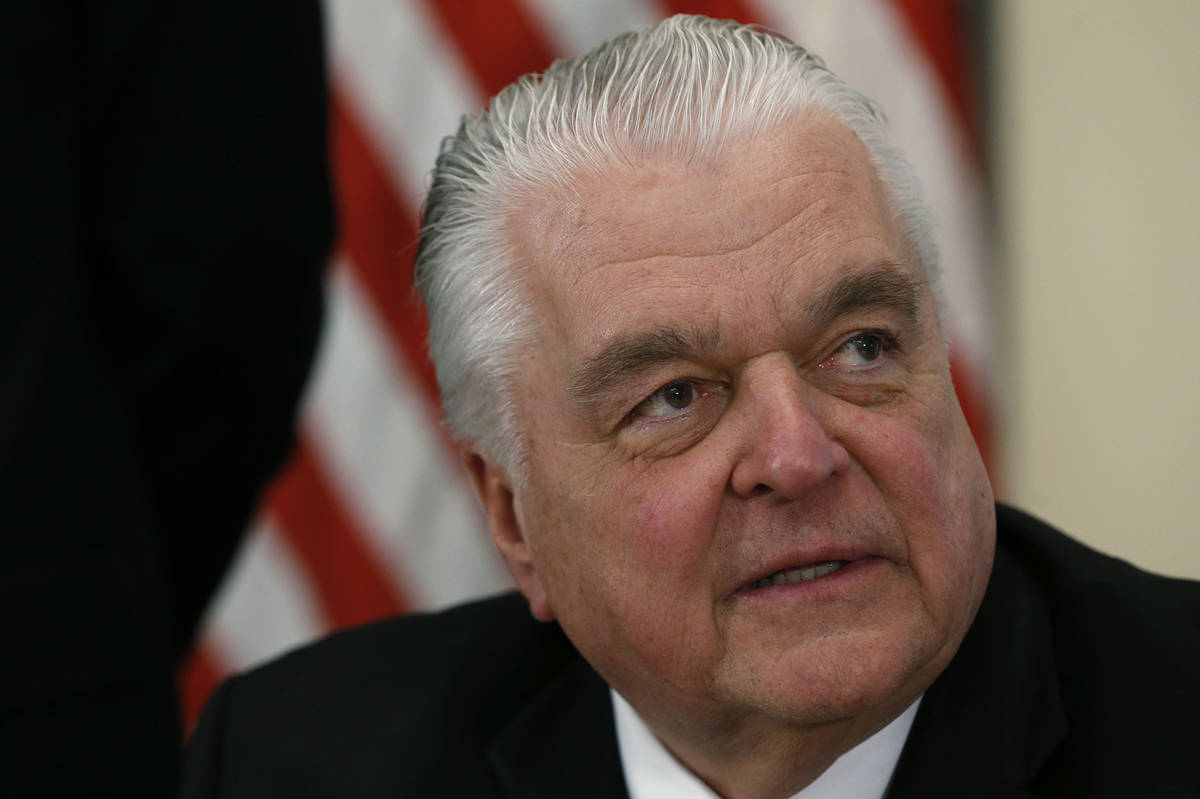VICTOR JOECKS: Sisolak’s Green New Deal would be a disaster for Nevada

The last thing Nevada’s beleaguered economy needs is a state-specific Green New Deal. That’s just what Gov. Steve Sisolak wants to impose, however.
On Tuesday, Nevada released its “state climate strategy,” billed as the path to net-zero greenhouse gas emissions. It’s filled with radical proposals that Nevadans are supposed to blindly accept to fight climate change.
Start with cars. Your car specifically. It’s a problem, if like most people you drive a car powered by gasoline. There are now more greenhouse gas emissions in Nevada from transportation than from energy production.
Never fear. Big Brother Sisolak is here to ensure Nevadans buy the right types of cars going forward. The report recommends adopting low- and zero-emissions vehicle standards, which he’s already working on. He wants to copy and paste California’s emissions regulations into Nevada law, effective model year 2025. California requires that 22 percent of cars and light duty trucks, including SUVs and minivans, be zero-emission vehicles by model year 2025. A complex credit system allows some flexibility in meeting that number.
But this would be a massive shift imposed on Nevadans from the top down. In the last quarter of 2019, electric vehicles accounted for about 2 percent of new sales. Zero-emission vehicles don’t include hybrids and plug-in hybrids because they produce tail pipe emissions.
This means Sisolak is demanding around a 10-fold increase in the number of zero-emission cars in just four years. Here I thought the governor would give up his crown when the coronavirus pandemic ended. Turns out he enjoys using kingly power to direct your life.
The downsides to this are so obvious that even the state’s own report can’t avoid them.
“In general, purchase prices are higher for ZEVs than for conventional vehicles,” it reads. “This could limit affordability.”
Imagine that. A government mandate increasing prices. If there are substantially more electric vehicles on the roads, politicians will also push for a new tax to make up for declining revenue from the gasoline tax. They’re already laying the groundwork for this in a pilot program requiring drivers to submit odometer readings when renewing vehicle registrations.
This is far from the only proposal that will take more money out of your pocket. Another plank of this plan is a low-carbon fuel standard. That would be a requirement to reformulate gas to reduce emissions. And you guessed it — it’ll cost more. “This program could increase the prices of gasoline and diesel, creating a potential challenge for low-income communities,” the report said.
Good thing low-income families have lots of extra money lying around to pay for upper-class virtue signaling. Rich people, of course, will be able to afford electric vehicles, especially with the proposed subsidy. The plan suggests a “cash for clunkers” program to help people to buy electric vehicles.
Another extreme proposal is eliminating fossil fuel power production by 2050. Nevada’s current Renewable Portfolio Standard is 50 percent by 2030. That’s aggressive, but at least it allows for fossil fuel plants, primarily using natural gas, to provide power when the sun doesn’t shine. Large-scale battery storage may come one day, but it isn’t here yet.
When a state relies too heavily on renewable energy, its residents are more likely to experience rolling power outages. In August, 350,000 homes and businesses in Northern California lost power amid a sweltering heat wave. In September, Sisolak asked Nevadans to use less power during a September hot spell to avoid blackouts.
Renewable energy: There for you until you need it most.
The obvious — and emissions-free — solution is nuclear power. But even a supposedly extinction-level threat isn’t worrisome enough to make most environmentalists consider that option.
Among the other proposals is a recommendation to eliminate stoves using natural gas. Liberals want government to stay out of your bedroom, but not your kitchen.
For all these costs, Nevadans will receive virtually no reduction in warming. After all, this plan won’t make China and India stop building new coal power plants.
But why sweat the little details? The Green New Deal’s most vocal proponents have assured us that the world is ending in 2030 anyway.
Victor Joecks’ column appears in the Opinion section each Sunday, Wednesday and Friday. Contact him at vjoecks@reviewjournal.com or 702-383-4698. Follow @victorjoecks on Twitter.